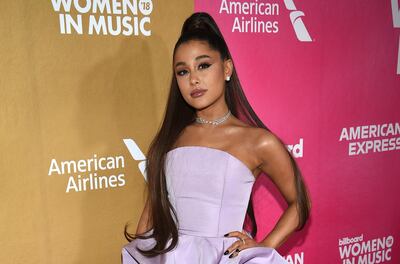These days, surprise is a powerful way of selling music. Years ago, singles would receive airplay weeks before release and albums would be trailed months in advance. But no longer.
Last week's unveiling of Taylor Swift's second album of 2020, Evermore, was the latest example of a high-profile artist releasing (or, in modern parlance, dropping) music on an unsuspecting public, and urging them to listen straight away on their favourite streaming platform.
This is one of many radical changes to the music industry that have been facilitated or forced by technology. Digital culture and global connectivity have arguably had a bigger impact on the music business than any other.
With that in mind, here are 10 things that have changed forever.
Music has become cheaper
The record company executives who once urged the public to stop recording albums to cassette could never have foreseen the industry tailspin caused by the making and sharing of mp3s.
Today’s music business, dominated largely by low-cost subscriptions to Spotify, YouTube and iTunes, has been entirely shaped by the ability of people to steal music if they really want to. And piracy is still a problem; stream-ripping (making offline copies of songs from streaming sites) has surged over the past three years as people try to avoid monthly payments to the likes of Spotify.
The public, it seems, still wants music for nothing.
It’s become easier to make
Technology has revolutionised music production. What was once seen as a black art is now in the hands of anyone with a computer, as software and hardware join forces to enable an extraordinary wave of creativity.
It’s easier and cheaper than ever to make something that sounds impressive, and every day hits are being created, made and distributed from people’s bedrooms.
Their talent is discovered directly across Instagram, TikTok and other social media platforms. Meanwhile, more established artists are exploring the cutting edge of music creation using gesture, touch and AI. No piano lessons needed.
… and to make available
Anyone can put their music on streaming services. Anyone can sell it via iTunes, Bandcamp or any number of other online outlets, to anyone in the world with an internet connection.
In theory, at least, the playing field has been levelled by digital technology, and all musicians have a global reach. But it’s that oversupply which has caused a slump in the price of music.
In the words of digital activist Cory Doctorow: “There are more people who want to make art than the market would support, and the arts are a highly concentrated industry: combine these two facts and you get a buyers’ market.”
Consumers are spoilt for musical choice
The celestial jukebox of music streaming is the result of that buyer’s market. Everything you could ever listen to, for a monthly fee. It exists thanks to a perfect marriage of internet networks, wireless connectivity, smartphones, technological ingenuity and lots of contractual wrangling with record companies. And people love it.
In the US in 2009, music streaming represented 5 per cent of the industry's revenues. In 2019, that had grown to around 80 per cent. Who needs to own music anyway?
Radio and television are taking a back seat
The streaming playlist has been taking charge, making sweeping decisions about what we should listen to next. One study discovered that playlists account for 31 per cent of listening time, compared to 22 per cent for specific albums. The algorithm, it seems, knows what we want better than we do.
Our listening habits aren’t a secret anymore
Streaming services know what artists we like, what time of day we listen and which tracks we skip. Our obsession with Bruce Springsteen or Ariana Grande becomes a data point. That data is invaluable to the industry, who use it as a marketing tool to make up for the loss of sales revenue. Decisions about touring, merchandising and even music itself are made from that data.
Music is changing shape
Songs and albums are morphing as a result. As tracks with slow build-ups tend to get skipped, the average length of a song intro has fallen from more than 20 seconds to around five. Albums are becoming longer, with more songs, to increase the chances of being picked up by the algorithm. And as our attention spans drop, songs get shorter.
The industry’s main threat: from gaming?
Baby boomers and Generation X were permanently hungry not just for pop music, but all forms of popular culture. Generation Z, meanwhile, have more than enough of it. Today’s entertainment markets are saturated with videos, games, podcasts and much else besides. When it comes to leisure time, it’s harder than ever for music to get a look-in.
Vinyl has become unexpectedly cherished
In 2018, physical media began to outsell downloads once again. The ubiquity and disposability of digital music made people – particularly the younger generation – yearn for an object they could touch, hold and put on display. Vinyl and even cassettes saw a resurgence in popularity.
Musicians get more money (proportionally, at least)
In 2017, according to a report from Citigroup, just 12 per cent of the music industry's $43 billion revenue went to musicians. Before the internet came along, it was 7 per cent.
But it’s still a very small slice of the pie. There have been a number of campaigns to raise awareness of the raw deal that musicians get, most recently #BrokenRecord. But Doctorow sees the outlook as bleak.
“[The tech business and music business] may squabble over how much of the money from art goes to which industry, but they're both in firm agreement that as little as possible of that money should go to the artists who created the work that they're selling.” Some things, it seems, never change.




